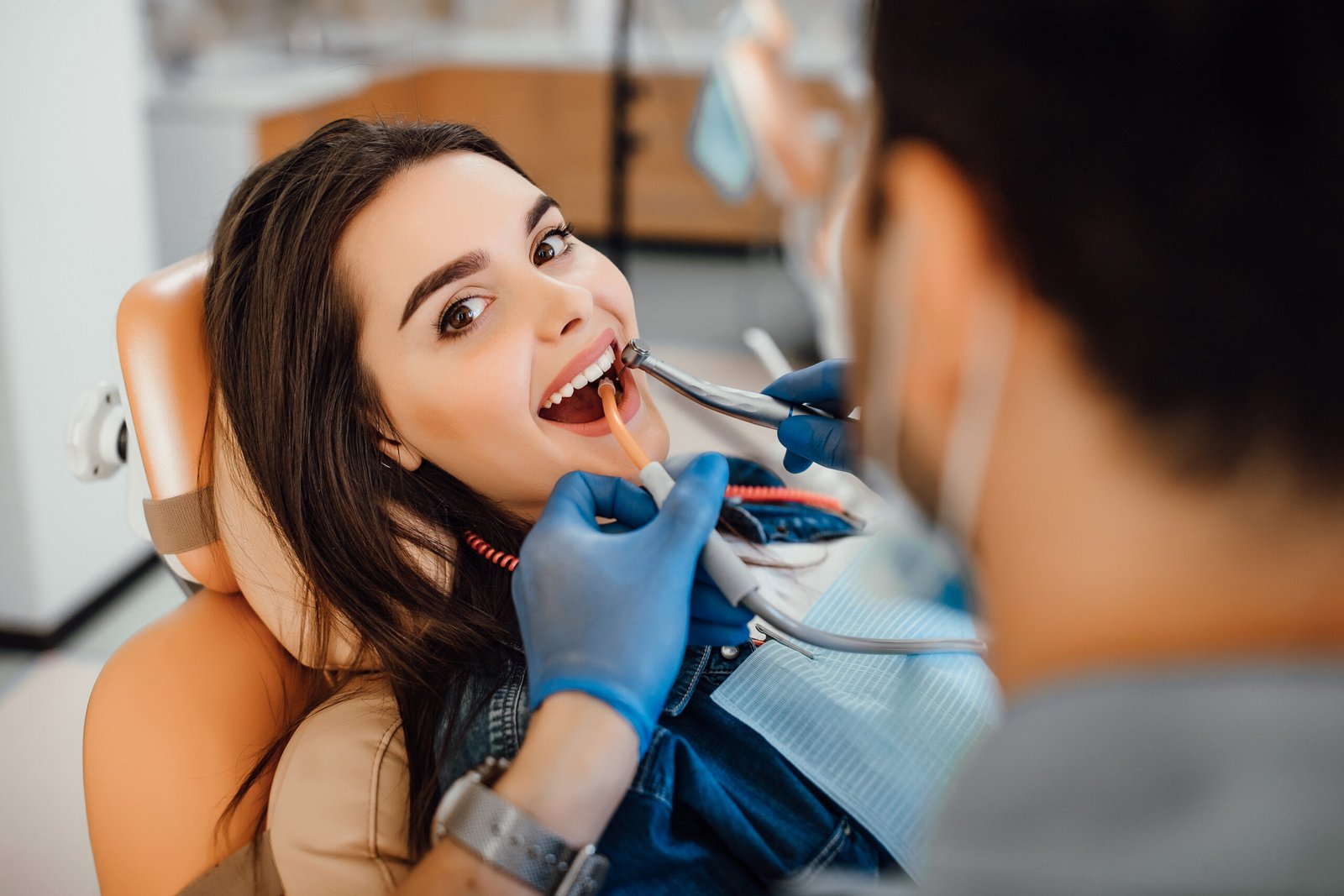Orthodontics, a specialized branch of dentistry focused on aligning teeth and jaws, is often surrounded by myths and misunderstandings. While many people recognize the benefits of a beautiful smile, misconceptions about orthodontic treatment persist.
Much like other specialized fields of medicine, orthodontics is often clouded by myths and half-truths. These misconceptions about orthodontic treatment can deter potential patients from seeking the care they need or even instill unnecessary fear and anxiety.
In this article, we address five prevalent myths surrounding orthodontics, shedding light on the truth behind each one to ensure patients are informed and empowered in their journey to a healthier, brighter smile.
1. Misconception: Only children need orthodontic treatment
This common orthodontic treatment misconception stems from the observation that many individuals undergo orthodontic treatment during their adolescent years. Braces and other orthodontic devices are often associated with teenagers, as it’s not uncommon to see young students with metal brackets and wires.
Must Read: Understanding Oral Bacteria’s Role from a Dentist
This age group is frequently targeted because the jaw and teeth are still growing, potentially making the alignment process more straightforward. Consequently, adults might feel that they’ve missed their window of opportunity if they didn’t receive orthodontic care during their youth.
The truth
Orthodontic treatment can be beneficial for people of all ages, including adults. Age isn’t a barrier to achieving a straight and functional smile.
Many adults seek orthodontic care due to past missed opportunities, shifting teeth, or the desire for a better smile. Modern orthodontic advancements offer discreet options like clear aligners, appealing to aesthetics-conscious adults. These innovations have worked against the orthodontic treatment misconceptions to offer efficiency and comfort.
Essentially, orthodontics is beneficial for all ages; age doesn’t limit one’s ability to attain a well-aligned smile. The core goal remains to enhance dental function and appearance, promoting confidence and overall oral health.
2. Misconception: Orthodontic treatment is purely cosmetic
The idea that orthodontics is solely for cosmetic purposes is a common misconception. While many are drawn to orthodontic treatments to achieve a picture-perfect smile, the scope and benefits of orthodontics extend far beyond just aesthetics.
Must Read: Invisible Alignment: The Invisalign Revolution in Teeth Straightening
The belief that orthodontic treatment is solely cosmetic is largely rooted in societal perceptions and popular media. Television shows, movies, and even advertisements often highlight the aesthetic outcomes of orthodontic treatment, focusing on the dramatic “before-and-after” visuals of transformed smiles.
One of the primary goals of orthodontics is to address functional issues. Misaligned teeth or a malocclusion (an improper bite) can lead to a range of problems. For instance:
The Truth
While aesthetics is a key reason many opt for treatment, orthodontics also addresses functional issues like bite alignment, which can prevent oral health complications.
Orthodontics primarily aims to correct malocclusions (misaligned bites) and other structural issues of the teeth and jaws since orthodontic treatments can help with teeth grinding and jaw clenching. Addressing these concerns is crucial, not only for proper chewing and speech but also to prevent a host of potential oral health problems. Misaligned teeth, for instance, can be harder to clean, increasing the risk of cavities and gum disease.
A misaligned bite can also lead to uneven wear, jaw pain, and TMJ disorders. Thus, while the cosmetic benefits of orthodontic treatment are undeniably appealing, the functional and health advantages are of equal, if not greater, significance.
3. Misconception: Braces are the only option for straightening teeth
Traditional metal braces have been a longstanding solution in orthodontics, deeply entrenched in popular culture and the collective psyche. Their ubiquity in past decades made them almost synonymous with the idea of teeth straightening. Television shows, movies, and books often portrayed characters with braces, reinforcing the image of metal brackets and wires as the primary tool for orthodontic correction.
Also, before the rise of new orthodontic technologies In Calgary, many people who underwent teeth straightening treatments only encountered traditional braces as their option, leading to generations of families familiar with just this method. Consequently, for many, the term ‘braces’ became a catch-all term to move forward the orthodontic treatment misconception, overshadowing newer innovations in the field.
Read More About: Say Goodbye to Bad Breath: 10 Effective Cures
The Truth
Truth: The world of orthodontics has evolved immensely over the years. While traditional braces continue to be an effective solution, they are no longer the sole option. Invisible aligners, like Invisalign, offer a near-transparent solution, making them particularly attractive to adults and teens who are self-conscious about undergoing treatment.
Lingual braces, placed behind the teeth, offer the strength of traditional braces without being visible from the front. There are also ceramic braces, which are less noticeable than their metal counterparts. Each of these options is designed to cater to different aesthetic preferences, treatment complexities, and budget considerations, making modern orthodontics a versatile field that accommodates diverse patient needs and desires.
4. Misconception: Orthodontic treatment takes several years
In earlier times, orthodontic technology and techniques weren’t as advanced as they are now. Treatments did often stretch out longer, which shaped public perception.
Stories of individuals wearing braces for many years tend to spread more than those of shorter treatments. This could be because extended treatment durations, due to their rarity and challenges, become more memorable and thus more frequently discussed.
Read More: Expert Tips to Counter Cavities
Also, TV shows, movies, and other media depict characters with braces as wearing them throughout their high school years, which has reinforced the idea of prolonged treatment durations.
The Truth
Truth: The duration of orthodontic treatment in Calgary truly varies based on individual needs. With the advancement of technology, such as self-ligating braces and high-tech wires, the treatment process has become more efficient.
Moreover, clear aligners, an alternative to braces, often require a shorter treatment time, especially for mild to moderate cases. While some complex cases might still take a few years, many are resolved in as little as 6-18 months. The key is to consult with an orthodontist for a personalized treatment plan and duration estimate.
5. Misconception: Once you get braces, you can’t eat any of your favorite foods
This myth likely started because orthodontists advise against eating certain hard, sticky, or crunchy foods that can damage the braces or get lodged between them. Over time, these dietary recommendations might have been exaggerated or misunderstood, leading many to believe that getting braces means giving up most of their favorite foods.
Read More About: Say Goodbye to Bad Breath: 10 Effective Cures
The Truth
While it’s true that some dietary adjustments are necessary when you get braces, it doesn’t mean all your favorite foods are off the table. Braces wearers are generally advised to avoid popcorn, gum, hard candies, caramel, nuts, and other similar foods. However, many foods are still perfectly safe to enjoy.
With a little care in preparation and consumption — like cutting apples into slices or avoiding biting directly into corn on the cob — many of the foods you love can still be part of your diet. It’s essential to maintain good oral hygiene and be cautious, but braces don’t equate to an end of culinary enjoyment.
Must Read: Invisible Alignment: The Invisalign Revolution in Teeth Straightening
Conclusion
In conclusion, the world of orthodontics, like many specialized fields, is rife with myths and misconceptions. These often arise from outdated practices, media portrayals, or simple misunderstandings. However, the truth is that orthodontic treatment has evolved remarkably over the years, becoming more efficient, comfortable, and tailored to individual needs.
Navigating this path with accurate information is crucial to making informed decisions. For those considering or curious about Calgary Orthodontists then our dentists at The Port Dental provide expert guidance, ensuring that patients receive the highest quality of care. Armed with knowledge and backed by professionals, you can confidently embark on a journey to a healthier, radiant smile.





